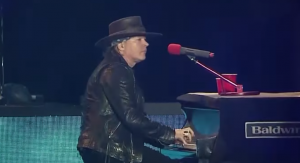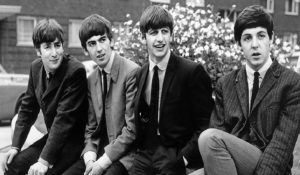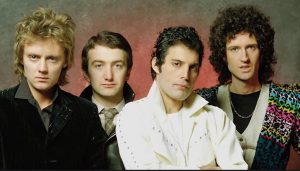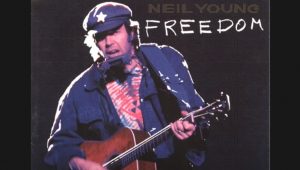The Weirdest Van Halen Songs Created
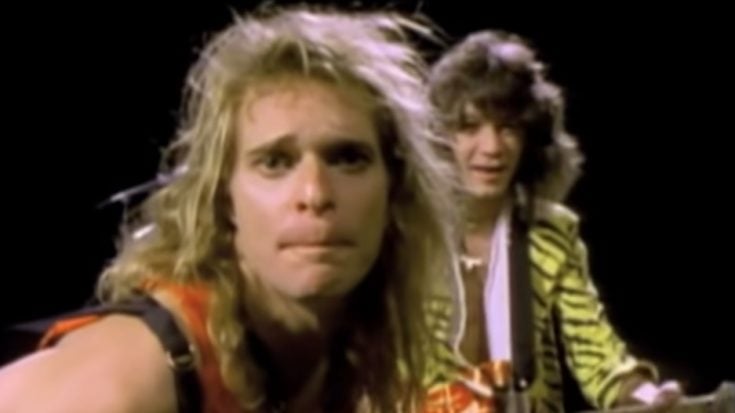
Van Halen for "Jump" - VHTelevision / Youtube
Van Halen experienced a multitude of contradictions throughout their career. Despite originating as a party band, they harbored one of rock’s most innovative musicians, guitarist Eddie Van Halen, who dedicated extensive hours perfecting his craft and instruments in isolation.
While their music, videos, fashion, and personalities became a model for a generation of bands, they found themselves entangled in two of the rock world’s most acrimonious breakups.
In essence, Van Halen’s realm was occasionally peculiar. They possessed a unique talent for fusing hard-rock proficiency with pop sensibilities and consistently demonstrated a creative edge over their contemporaries.
Their success was marked by bold and occasionally unconventional musical experiments, a facet explored in this chronological examination of the ten weirdest songs they ever did.
“In a Simple Rhyme” / “Growth” (Women and Children First, 1980)
Van Halen’s initial two albums showcased compositions originating from their club performances. However, their third LP marked a departure, seizing the opportunity to craft new material. This venture broadened Van Halen’s artistic spectrum as they dived into more intricate arrangements.
A notable example of this evolution is found in the concluding track of the album, “In a Simple Rhyme”. This pop-infused, progressive rock piece carries a somewhat eccentric quality, reminiscent of Rush’s attempt at a romantic ballad.
As the gentle fade-out of “In a Simple Rhyme” unfolds, listeners are met with an unexpected twist: a 30-second instrumental named “Growth”, characterized by a colossal guitar riff of brontosaurus proportions. According to insights from The Van Halen Encyclopedia, the initial intention was to expand “Growth” into a complete song, positioned as the opening track for the subsequent album.
Although this plan didn’t materialize, the band sporadically featured the song in their live performances. Notably, a 1986 rendition included both Eddie Van Halen and Sammy Hagar on guitars, showcasing the enduring allure of this unconventional musical journey.
“Sunday Afternoon in the Park/One Foot Out the Door” (Fair Warning, 1981)
Venturing further into the realm of experimentation, Eddie Van Halen, having slyly replaced his guitar with an electric piano in “And the Cradle Will Rock…” from Women and Children First, went deeper into synthesizers with the subsequent album.
Embracing innovation, he employed an affordable Electro-Harmonix micro-synthesizer to craft the distinctive “Sunday Afternoon in the Park”. This two-minute instrumental piece exudes a funky and eerie vibe, akin to George Clinton’s interpretation of a John Carpenter film score.
The tempo takes a dramatic shift in the conjoined track, “One Foot Out the Door”, transitioning into a hyperactive electro-boogie. Against this lively backdrop, David Lee Roth weaves a narrative of caution, attempting to avoid entanglements with someone else’s spouse.
The culmination of this musical journey is marked by one of Van Halen’s most intense guitar solos, a powerful crescendo that regrettably fades out too swiftly, leaving the audience yearning for more. This dynamic combination encapsulates the band’s willingness to push boundaries and infuse their repertoire with eclectic sonic elements.
“Big Bad Bill (Is Sweet William Now)” (Diver Down, 1982)
A significant point of contention between David Lee and Eddie centered around the latter’s incorporation of keyboards into the band’s sound. Roth was apprehensive, fearing that this departure from the traditional “guitar god” image would alienate fans.
However, history would later prove Roth’s concerns unfounded, especially with the success of keyboard-driven hits like “Jump” and the band’s string of ’80s favorites. Interestingly, it was Roth himself who proposed a unique twist for the cover of the 1924 Milton Anger and Jack Yellen song “Big Bad Bill (Is Sweet William Now)” on the covers-heavy album Diver Down.
In an unexpected move, Roth also suggested involving Van Halen’s father, Jan, to play jazz clarinet on the track. The recording session was marked by Jan’s nervousness, a sentiment EVH vividly recalled. Despite the apprehension, the band encouraged Jan to simply enjoy the experience, emphasizing that mistakes were part of the authentic musical journey.
Reflecting on the session, Eddie expressed admiration for his father’s contribution, stating, “I love what he did”. This collaborative endeavor not only showcased the band’s willingness to explore diverse musical elements but also underscored the familial connection that enriched their artistic expression.
“Hot for Teacher” (1984, 1984)
Marking the culmination of Roth’s first tenure with Van Halen, the unconventional and somewhat peculiar “Hot for Teacher” emerged as the final single from the album 1984. The song’s distinctiveness is immediately evident as it kicks off with a 30-second drum solo, followed by an extended guitar solo—a rare departure from the conventional song structures of its time.
Another bold departure from the norm, Roth doesn’t make his vocal entrance until over a minute into the track, assuming the role of a narrator addressing his “classmates” rather than traditional singing. Meanwhile, Eddie Van Halen seamlessly transitions into chicken-pickin’ rhythms, adding a layer of complexity to the composition.
Although a more traditional verse-and-chorus structure eventually surfaces, Van Halen refuses to linger in one musical space for too long. The band masterfully blends speed-metal riffs with high-school humor, creating a dynamic musical tapestry that culminates in a Broadway-worthy chorus.
“Inside” (5150, 1986)
Launching into the closing track of his debut album as Van Halen’s new vocalist, Sammy Hagar sets the tone with a candid inquiry: “Man, what kind of crap is this?” The song “Inside”, nestled at the end of 5150, serves as a unique exploration, breaking the fourth wall to confront, albeit indirectly, the controversy surrounding Hagar’s entrance as David Lee Roth’s replacement.
Set against a thumping synth-rock groove, Hagar engages in a meta-discourse about his experiences with his new bandmates. He muses on the transformative nature of the role, expressing, “Now me, look, I got this job not just being myself”, highlighting the changes and adjustments that come with such a significant shift.
Playfully, he notes the symbolic gesture of buying new shoes, humorously remarking, “I went out, I bought some brand new shoes, now I walk like something else”. As “Inside” progresses, Hagar strides into more serious themes, showcasing his vocal prowess by reaching impressive heights.
The lyrics touch on the desire for something special and someone new, an introspective exploration of the artist’s yearning for fresh creative challenges. The song serves as a multifaceted expression of self-awareness and adaptation, encapsulating Hagar’s journey as he sinks his artistic teeth into the evolving identity of Van Halen.
“Mine All Mine” (OU812, 1988)
Having already demonstrated their adeptness at utilizing keyboards for crafting hit pop singles and ballads, Van Halen embarked on a more sophisticated musical journey with the opening track of OU812. Clocking in at over five minutes, the intricate “Mine All Mine” takes a serious turn, venturing into jazz-fusion territory and introducing a new level of lyrical depth that nearly pushed Sammy Hagar to his limits.
The complexity of “Mine All Mine” signifies a departure from the band’s previous keyboard-driven endeavors, embracing a more intricate and mature sonic landscape. The track unfolds as a testament to Van Halen’s willingness to push their musical boundaries, transcending the confines of radio-friendly formats.
Hagar, tasked with the lyrical composition, found himself facing an unprecedented challenge. In a candid revelation to Martin Popoff in 2010, the Red Rockershared the intense struggle he experienced during the songwriting process, stating, “It was the first time in my life I ever beat myself up, hurt myself, punished myself, practically threw things through windows, trying to write the lyrics.”
The creative journey of “Mine All Mine” encapsulates the band’s commitment to artistic evolution, with Hagar’s lyrical tribulations adding a layer of authenticity to the track’s exploration of intricate musical landscapes.
“Pleasure Dome” (For Unlawful Carnal Knowledge, 1991)
In the larger context of Van Halen’s For Unlawful Carnal Knowledge, which largely saw a return to the band’s roots in straightforward guitar rock, the track “Pleasure Dome” stands out as a captivating anomaly.
While hits like “Right Now” briefly reintroduced keyboards, the majority of the album embraced a robust, guitar-centric sound reminiscent of a “Standing Hampton-on-steroids” formula. However, within this guitar-driven landscape, the seven-minute odyssey of “Pleasure Dome” takes a daring turn into the realm of progressive rock.
In this expansive composition, the Van Halen brothers and Michael Anthony engage in a musical dare, venturing deeper into a King Crimson-style madness. Hagar’s vocals, themed around cosmic elements, contribute to the overall ambiance, although they seem almost secondary to the instrumental intricacies at play.
“Pleasure Dome” is a testament to Van Halen’s willingness to experiment and explore diverse musical territories. The song’s progressive rock elements defy the expectations set by the rest of the album, adding a layer of complexity that showcases the band’s versatility. Notably, when performed live, the song often leaned toward the instrumental side, emphasizing the instrumental prowess and the immersive musical journey encapsulated within the “Pleasure Dome”.
“Strung Out” (Balance, 1995)
Have you ever harbored the curiosity to witness Eddie Van Halen unleash his musical prowess on a piano? The origin of the unconventional track “Strung Out” traces back to a unique moment in 1983.
According to insights from the Van Halen Encyclopedia, during the band’s stay at composer Marvin Hamlisch’s beach residence, the guitar god embarked on a musical experiment that involved pushing the boundaries of a piano.
In a display of sheer creativity and audacity, Eddie infused the piano with an array of unconventional elements. He threw various objects into the piano and ran items across the strings, including ping-pong balls, D-cell batteries, and even silverware. The result? Hours of recorded material capturing this avant-garde exploration.
However – for 1995’s Balance, the final album to feature Sammy – Eddie Van Halen judiciously curated the best 90 seconds of this sonic experimentation, culminating in the creation of “Strung Out”. The track not only provides a unique auditory experience but also serves as a glimpse into the unbridled creativity that fueled Van Halen’s sonic explorations during a pivotal period in their musical journey.
“Crossing Over” (Balance Japanese Edition, 1995)
Within Van Halen’s discography, a singular non-album B-side stands out, and its background is rooted in a poignant tale. In 1983, Eddie composed “David’s Tune”, a heartfelt tribute to a friend who tragically lost his life to suicide.
In a demonstration of his multi-instrumental and vocal capabilities, Eddie played all the instruments and provided the vocals for this deeply personal composition. However, the track remained tucked away in the vaults for years.
Fast forward to 1995, and the circumstances surrounding “Crossing Over” take an unexpected turn. After Hagar joined Van Halen in 1985, he expressed eagerness to collaborate and expand on “David’s Tune”. Yet, Eddie Van Halen held onto “Crossing Over” until a significant event unfolded—the passing of the band’s manager, Ed Leffler.
In response to this sorrowful occasion, a complete band rendition of the track was recorded, seamlessly blended with Eddie’s original version. Interestingly, the final recording features Eddie’s original take in the left channel, creating an otherworldly sonic effect that perfectly complements the song’s poignant subject matter.
“How Many Say I” (Van Halen III, 1998)
Van Halen III is the most denounced album in the band’s extensive catalog, with a significant portion of the criticism directed at the closing track, “How Many Say I”. This particular composition is noteworthy not only for being the concluding piece of an album that marked a transitional phase for Van Halen, introducing Gary Cherone as their third vocalist but also for featuring Eddie Van Halen in his sole lead vocal performance.
In a departure from the band’s signature sound, “How Many Say I” is a piano-based track that echoes the style of a late-era Roger Waters ballad, presenting an intriguing and unexpected creative choice. This divergence in musical direction, combined with the band’s ongoing evolution, sparked controversy and raised eyebrows among fans and critics alike.
Eddie Van Halen, in a candid revelation to Billboard at the time, acknowledged the unusual nature of his lead-vocal debut, stating, “They forced me. Don’t be shocked when you hear the vocal”
The track unfolds as an enigmatic closure to an album fraught with mixed reviews and marked by the challenges of transitioning to a new vocalist. Despite the polarizing reception, the song serves as a testament to the band’s willingness to experiment and push creative boundaries, capturing a moment in their journey where artistic exploration took center stage, even if met with diverse opinions.




